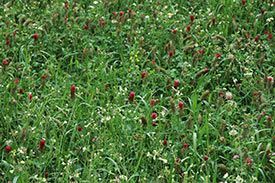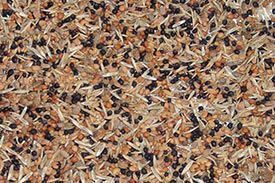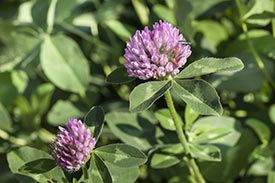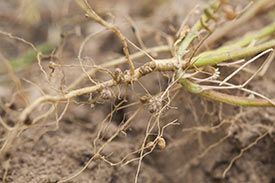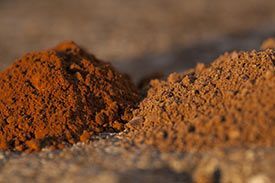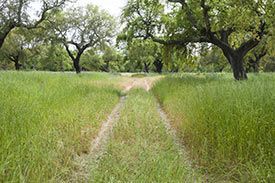Sown Biodiverse Pastures
Sown Biodiverse Pastures are a system of pastures developed in the 1970s in Portugal by Engineer David Crespo. They differ from conventional pastures by making use of diversity (fig.1) and the functional complementarity of plant species in increasing crop production.
The true extent of these pastures in terms of Biodiverse Engineering is only patent in their full name - Sown Biodiverse Permanent Pastures Rich in Legumes. “Permanent” because once sown, they are maintained for a long period of time (at least 10 years). “Sown” because improved and selected seeds are introduced (fig.2) with higher yields than those occurring naturally in seed systems.
Its epithet “Biodiverse” is due to the fact these pastures are sown with mixtures of large numbers and varieties of seeds (up to 20) and therefore possess a wide range of genetic material to add to what is already in place. This diversity gives the pasture greater adaptability to microtopographic variations. Along with its specific diversity, it results in greater adaptability to annual climatic variations. It also provides greater resistance to environmental factors and greater photosynthetic capacity.
The proportion of legumes in the seed mix is significant, and that is why the pastures are labelled “Rich in Legumes” (fig. 3). Legumes fix nitrogen directly from the atmosphere through microorganisms belonging to the genus Rhizobium, concentrated in root nodules (fig. 4). Nitrogen is thus consumed by grasses, preventing it from existing in too higher concentrations. High biological nitrogen fixation avoids the use of nitrogen fertilizers, which cause greater environmental impacts and high greenhouse gas emissions.
The combination of these features leads to biodiverse sown pastures to have sustained increases in productivity. Being more productive, they provide more food for animals and also increase the organic matter (OM) in the soil associated with the roots. OM is a key parameter in farm management, it is important for agronomic and environmental reasons. Soils rich in organic matter are less susceptible to erosion, have higher water holding capacity and are richer in nutrients and thus more fertile (fig. 5). Additionally, legumes decrease the input of nitrogen fertilization and consequently reduce environmental impact, in addition to more effective control of spontaneous vegetation, with consequent reductions in the costs of maintaining pastures and the fire risk associated with the use of fire for regeneration of pasture.
For all the above reasons, Sown Biodiverse Pastures constitute an alternative agricultural system that optimizes both the economic and environmental performance of farms. Both these aspects are particularly relevant in areas susceptible to agricultural abandonment and desertification (fig. 6).
